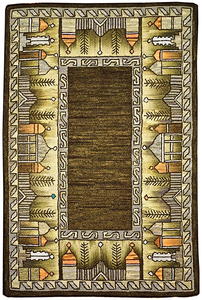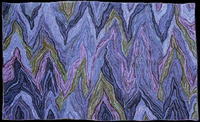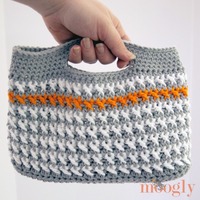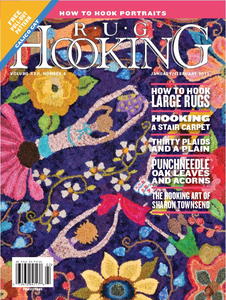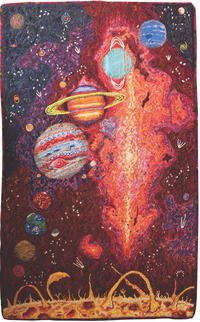North American Orientals: Part Five
Focusing on Colors and Dyeing
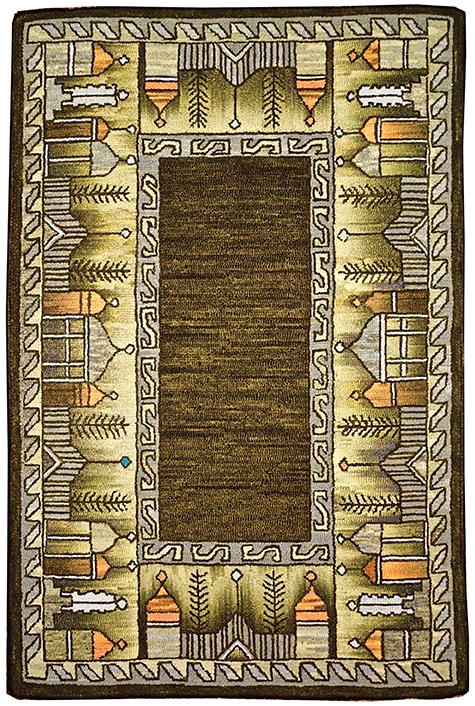
Anatolian Runner, 30" x 72". Designed by Jane McGown Flynn, hooked by Anne Boissinot. Pattern available from Honey Bee Hive.
Anne Boissinot, OHCG and McGown certified teacher, favored brown (PRO Chem #503) over various wools to create her Anatolian Runner and is especially fond of #503 in the lighter values because of the movement in the dye.
In the search for the perfect colored wool for their Oriental rug, many hookers find there is no choice but to dye their own. Larger Oriental patterns will use several yards of wool and even though a somewhat mottled or “abrash” effect is preferable over off-the-bolt wool (which still has to be washed before using), it is difficult to find enough yardage of one color unless it is custom dyed—either by yourself, by a teacher, or by a generous friend.
CHOOSE YOUR COLORS
There are several dyes that could be used straight out of the jar for Oriental “fields” (backgrounds). One trick is to take a single dye and use it over colored wool, providing a base color that adds dimension and color shifts, especially when the wool is a complement to the dye color. This combination will have the effect of toning the original hue.
For instance, we know green is the complement of red, so bright red wool, even recycled skirts, can be overdyed
with a green such as PRO Chem 745 to darken and deepen the red. A split complement—where instead of using colors directly across from each other on the color wheel, the dyer chooses a color on either side of the direct complement—creates a different color shift in the final product. An example might use red-orange dye instead of orange over light blue wool to produce a burgundy; or a yellow-orange dye to produce ochre. Adjacent colors (those either very close to or next to each other on the color wheel) can be controlled in the dye bath to create light color shifts or very dramatic ones. Cushing Mahogany lightly washed over a medium blue wool produces a lovely periwinkle. The trick is to keep the dyeing simple in the event it has to be repeated—and never use up all your wool before dyeing another batch in case the differences between the two need to be “blended” throughout the rug.
Estimate the amount of wool needed right from the beginning, and then dye up the necessary amount plus a bit extra (is there any such thing as leftover wool?). Divide the rug into quarters and make sure every dye lot of that color is used in each quarter, so that even if you’ve had to blend your dye batches they are equally blended around the rug.


